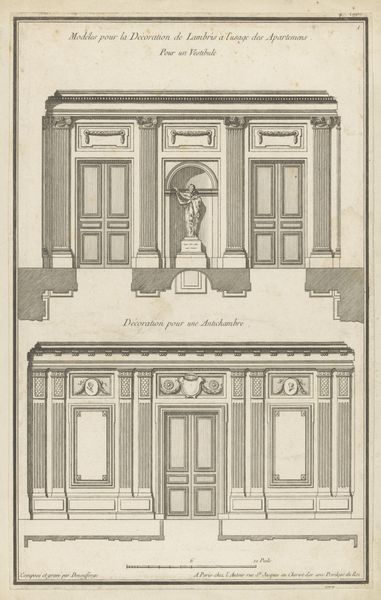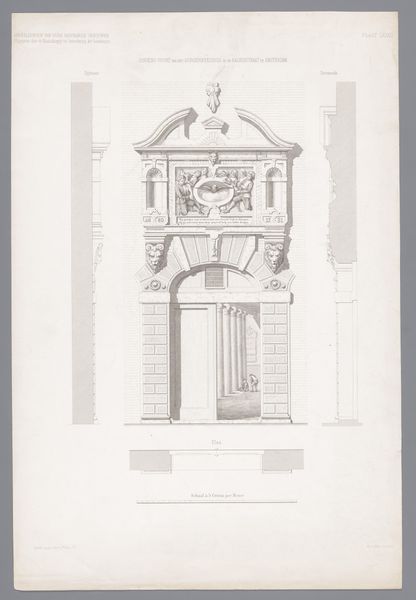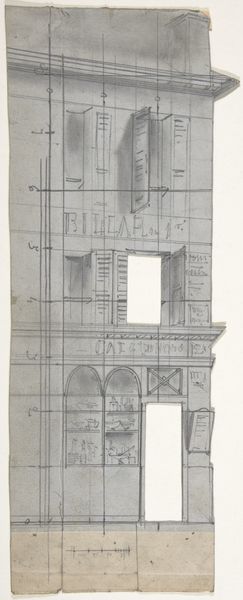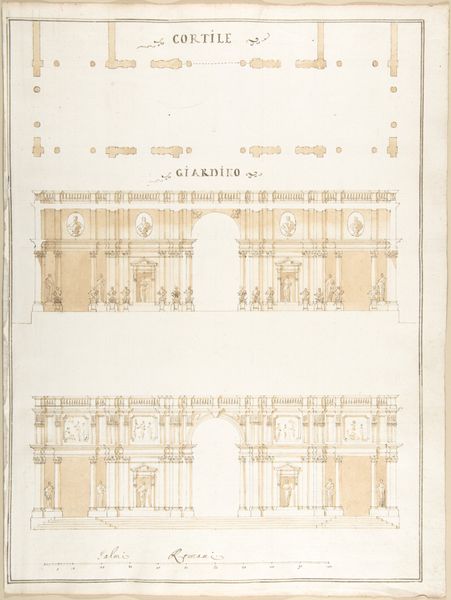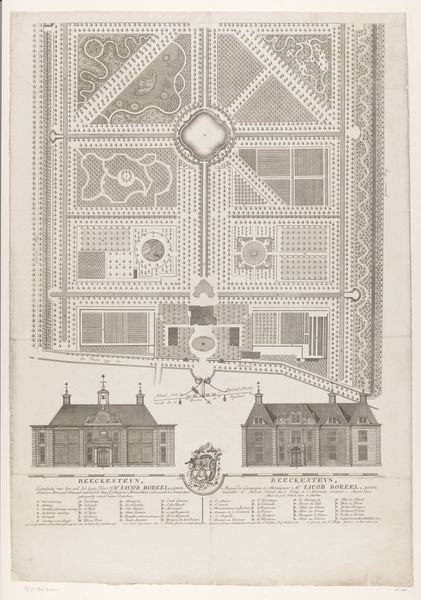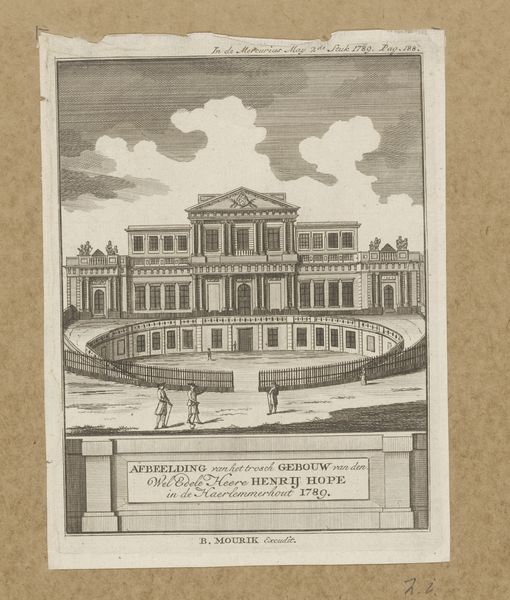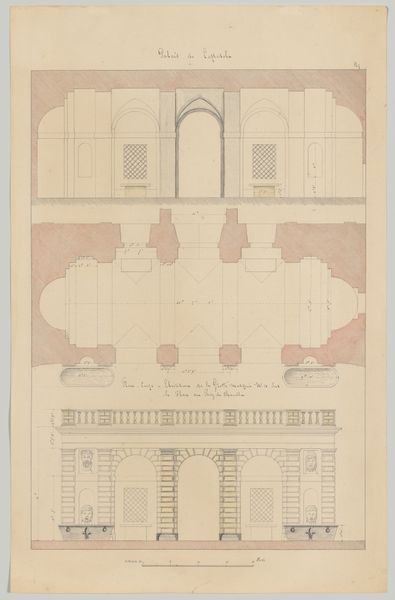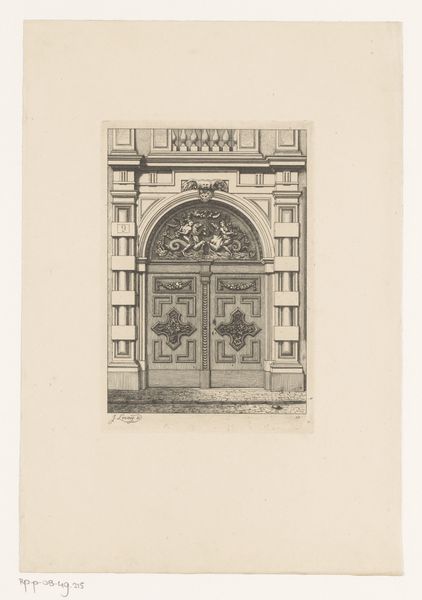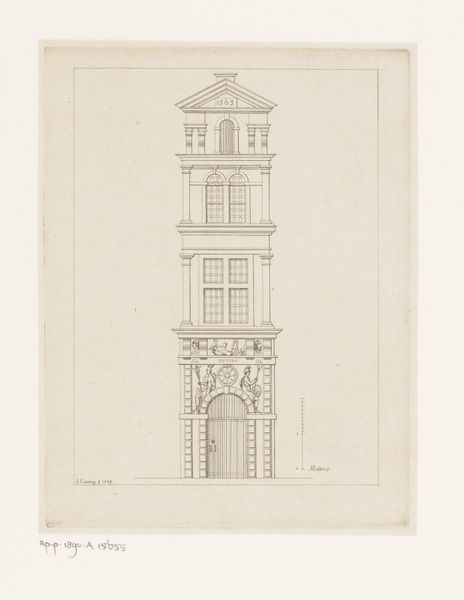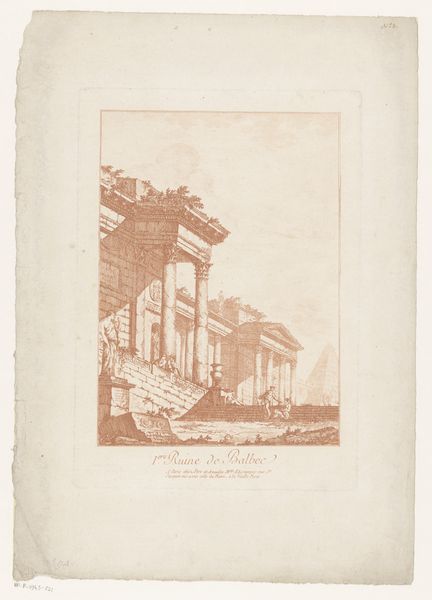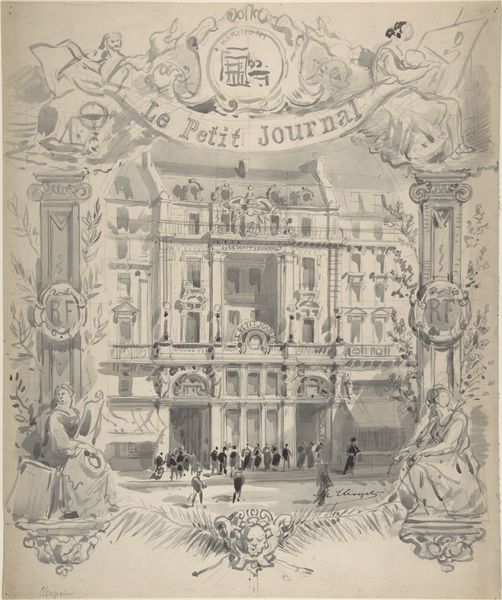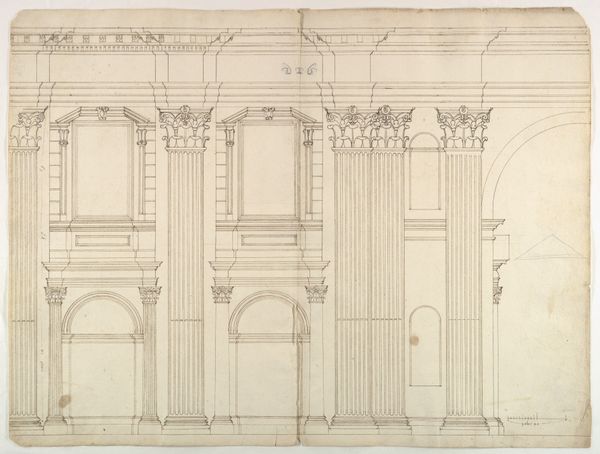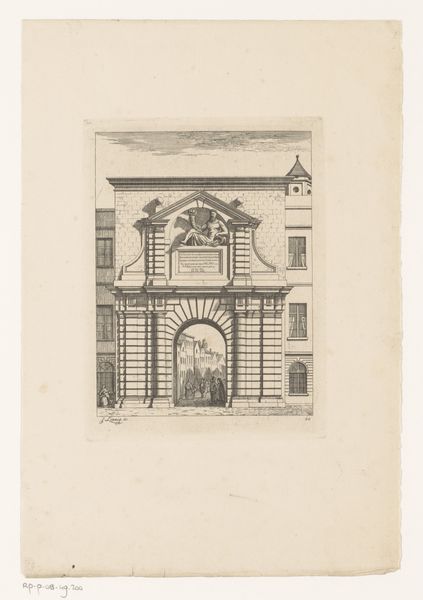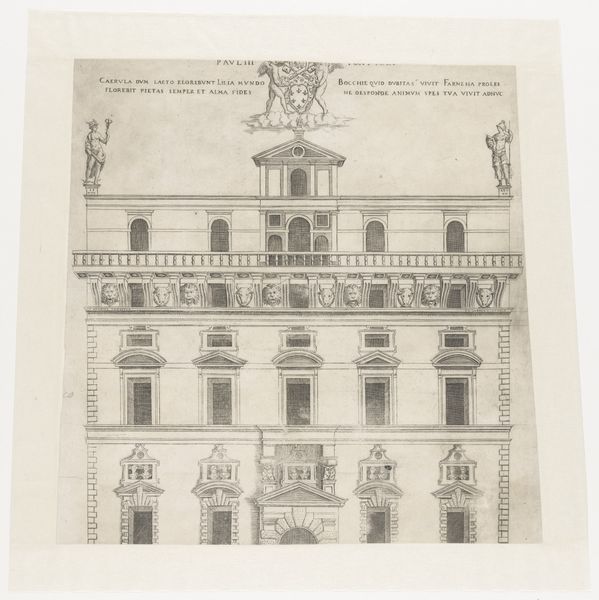
Gezicht op de gevel en het interieur van een Antwerps winkelcentrum 1825 - 1891
0:00
0:00
drawing, print, ink, engraving, architecture
#
architectural sketch
#
drawing
#
neoclacissism
# print
#
perspective
#
ink
#
architectural section drawing
#
architectural drawing
#
architecture drawing
#
cityscape
#
academic-art
#
engraving
#
architecture
Dimensions: height 348 mm, width 219 mm
Copyright: Rijks Museum: Open Domain
Curator: Here we have "View of the Facade and Interior of an Antwerp Shopping Center" by Jean Théodore Joseph Linnig. It's rendered in ink, as an engraving and print, dating from sometime between 1825 and 1891. What strikes you initially? Editor: It feels… almost dreamlike. The cool grey tones, the precision of the lines… it’s like stepping into a memory, or maybe a blueprint for a grand idea. It makes me want to dress in a bustle and purchase some lace gloves! Curator: Absolutely! There's a distinct formality, a product of its Neoclassical leanings, especially apparent when we consider the historical context. We see here, in effect, a constructed space of bourgeois leisure and consumption being presented, but also implicitly promoted, as an idealized social sphere. The image operates, then, on various intersectional registers from the economic to the gendered and the social. Editor: Yes! Look at the figures; they’re so elegantly placed, almost staged. The rendering emphasizes a hierarchy—those nearer us are given more detail, while further back it feels like it fades off into imagination! There's almost a sense of theater in this “architectural section drawing.” Curator: And consider how this architectural drawing also encapsulates ideas of nationhood and emerging global commerce, the arcade representing a newly accessible commercial landscape while maintaining visual reference to more ancient traditions. The spatial arrangements reinforce social norms and power structures. It’s not just about the facade of a building but the façade of society itself. Editor: This makes me reflect on how our shopping spaces still, even now, follow so many of the "rules" seen in the drawing: lighting, layout, the performative nature of customer service… plus, everything for sale to build the fantasy of “the good life.” So interesting. Curator: Exactly! It invites us to consider how these constructed environments both reflect and shape our behaviors, desires, and interactions within the broader political economy. The composition is like a set of diagrams exposing not just the "what," but a crucial “how" and "why". Editor: I came in ready to spend my inheritance on bonnets, and I am leaving ready to tear down the capitalist patriarchy… a very useful art experience! Curator: Well, perhaps art, then, fulfills its most important purpose by creating the conditions for precisely such radical insights. Thank you.
Comments
No comments
Be the first to comment and join the conversation on the ultimate creative platform.
